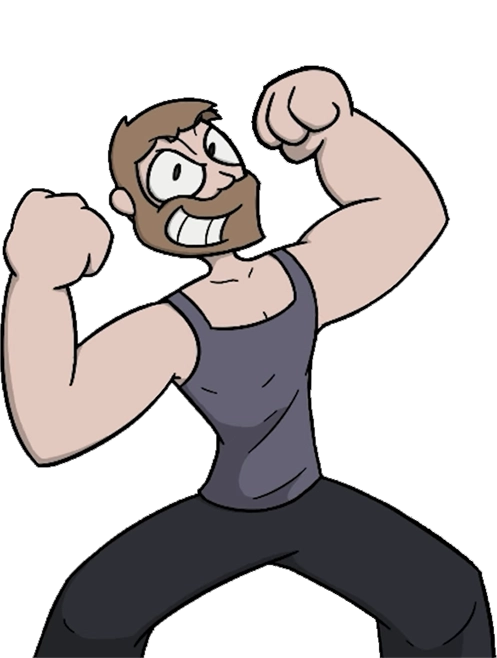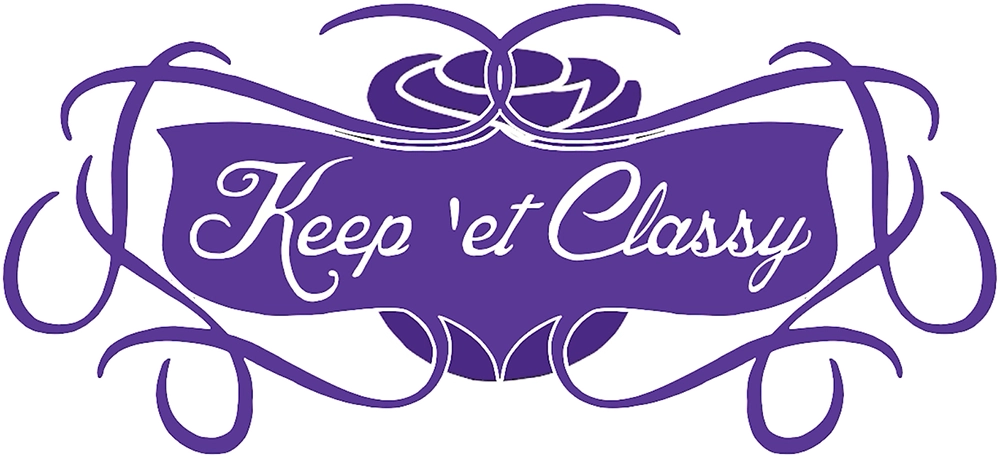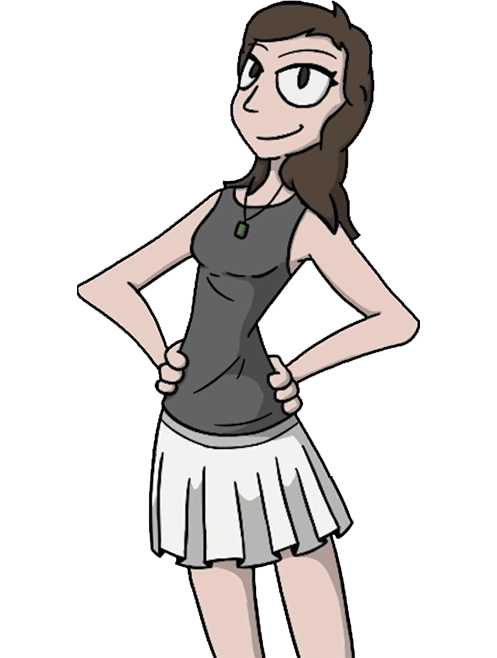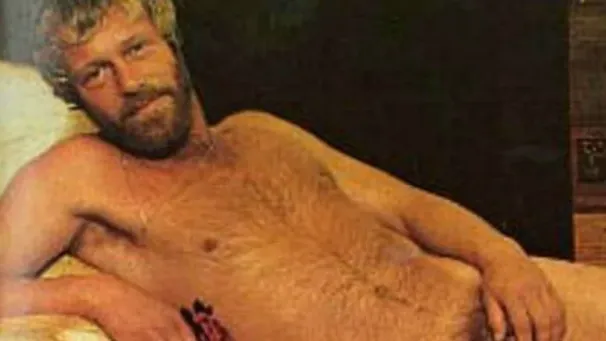At first glance, Jane Austen and noted Australian actor Jack Thompson’s penis don’t have an awful lot in common and there was a time when I would have felt the same way. When given carte blanche to select your own topic to write on, the thinking writer shoots for a pleasant combination between the least amount of work and the most amount of fun. Naturally, I selected pornography as my area of focus. Porno. Even saying the word is enough to make your mouth feel dirty and the images it calls to mind are hardly any cleaner. It is mass consumed and yet mass condemned, so powerful a loathing does it summon that it has been able to unite both fundamentalist Christian and radical feminist on the matter of how a woman should be depicted. No small miracle.
I say woman and not man because everyone knows that porn is for men. Say porno and people picture some guy, crankin’ it to some girl. Men too unattractive to get laid, hunched over a screen, shuddering away and the complex ways this mental image constructs the world is a very interesting subject. But it’s also a subject that’s been done to death, go Google it, I’ll wait.
You’re back! Great. So that got me to thinking, the modern world and its myriad wonders has brought with it a slow deconstruction of many old beliefs about the differences between the sexes. Once indisputable facts are now routinely mocked absurdities but one of the last to fall (or at least, start to lean a bit) is the axiom that porn is a guy thing. Pornography made by and/or for heterosexual women (gay and queer porn is an essay of its own) is, in this post-Sex and the City era, less of a surprise but it is not as recent as one might think. The history of women’s porn, the forms it has taken and the means by which it is accessed, parallel the emancipatory history of the western woman and provide interesting perspectives on the process. Separated (like women’s history itself) into pre and post Women’s Liberation, the following will take you from Reformation England to the Internet and explain just what Jane Austen, and Jack Thompson’s penis have in common.
Part 1.
A divorce, an industrial revolution, and a pair of publishing houses walk into a bar: Romance novels and the Vaginal Photoplethysmograph.
Henry VIII and Sexual Assault: The Birth of Romance.
The mid 1500s were a pretty happening time in Briton. Henry VIII had just created the Church of England and sense of “affective individualism” was present in the new church’s message. Preachers were defining marriage in a new way, one that stressed mutual love, comfort, and support. Marriage was the single decision a woman would make in her life and now there was a social system supporting her concern for good treatment. This new social reality became the groundwork for the earliest “romances”.
I put the term “romance” in the inverted commas of irony because the plot of the first major novel, Samuel Richardson’s Pamela: Virtue Rewarded (1740), was essentially a fifteen year old girl haggling with her rapist/employer over the details of her marriage contract. Believe it or not, this was remarkably empowering within its social context — a theme that tends to follow the romance genre — and the book was an absolute hit, spawning theatrical adaptations, unauthorized sequels and even merchandise. This book would contain most of the tropes which have come to define the romance genre as it was expanded on in now famous fashion.
A modern dismissal of the romance genre is that it’s pop but, like Pamela, literary classics like Jane Austin’s Pride and Prejudice (1813), Charlotte Bronte’s Jane Eyre (1847), and American “domestic sentimentals” like E.D.E.N Southworth’s The Hidden Hand (1859) were the hugely successful pop-culture of their day. They fed a new market of literate, middle-class women. Women whose home industries had been eliminated by the industrial revolution and whose participation in society was entirely restricted, women with nothing to do but read. By the late 1800’s a majority of English readers were female and they were reading about one of the few areas of their lives they could exercise some control. Into this new publishing world, stepped Gerald Mills and Charles Boon.
Mills and Boon, Harlequin, and Hiding Your Porn in Plain Sight
Mills and Boon (M&B) had both worked for a British publishing firm, Methuen, as education director and sales manager respectively, before turning a shared 1000 pounds into their own publishing house in 1909. Their first published book, Sophie Cole’s romance, Arrows from the Dark (1909) was released along with a variety of other fiction and non-fiction lines. By 1914, Arrows from the Dark, had sold 1,394 copies and other Mills and Boon romances like Beatrice Grimshaw’s When the Red Gods Call (1911), and I.A.R. Wylie’s The Daughter of Brahma (1912) were blockbusters of the time. Following the financial crisis of the late 20s and Mills’ death in 1928, the company’s bleak financial position forced them to drop anything not wildly profitable. Fortunately, romance fiction was wildly profitable and this growth period saw the development of their marketing by genre (instead of the traditional author) and the mail order catalogue sales system. They were (and still are) an untouchable juggernaut of publishing which is why they caught the eye of a small Canadian publishing firm, Harlequin Books.
Incorporated in 1949 in Wiinipeg by Jack Palmer, Doug Weld and Richard Bonnycastle, Harlequin Books began much like M&B, publishing whatever they could get their hands on. Amongst fascinating titles like Lady, That’s My Skull were reprints of various British authors, including some attached to Mills and Boon. Richard Bonnycastle took control of the company in 1957 and a year later he owned the entire business along with his wife, Mary. By 1964, Harlequin had been republishing Mills and Boon for 7 years while maintaining other lines. Mary Bonnycastle, working as editor, saw great potential in the popularity of their romances and dedicated Harlequin to the genre exclusively. A mail-order system and advertising focused in supermarkets, women’s magazines and daytime television saw Harlequin’s profits skyrocket and in 1971 the company purchased Mills and Boon. Together they were the most profitable publisher for the next decade and are still a dominant force today. You’re probably wondering when this is going to be about porn and not the minutes of Harlequin’s most recent corporate meeting. But that’s the thing, romance fiction IS porn, it just doesn’t look like it when porn is defined by magazines that spell jugs with two gees and a zed.
Men and Women can be Different: The Science of Sit-Com Stereotypes
A 2009 study on how emotional and cognitive absorption affected women’s responses to erotic material found “that the degree to which a woman becomes absorbed in an erotic stimulus, such as a film excerpt, may have a substantial impact on her subsequent feelings of sexual arousal.” A 2014 study, using a less-than-pleasant sounding vaginal photoplethysmograph, found that “The strongest single predictor of subjective arousal was sexual arousal thoughts” and not raw external stimulus. Carol Thurston cites similar studies when she states that, “…the brain is involved physiologically and exerts more control in the sexual arousal of females than in males” and that “if there is any single label that fits these romances today it is female sexual fantasy”. Early forms of “pure” or “sweet” romance were known for “stopping at the door” but just because nothing carnal was described doesn’t mean nothing carnal was suggested. Early works, like 1928’s The Dancing Boy, would use lines like, “The fact of his love was a spar she clung to when the wild seas engulfed her” to craft effectively erotic moods. And, as the aforementioned studies show, these moods are enough. When interviewed on the subject, a woman going by the name of Gil said “Like reading Mills and Boon… there are some of those… that are really sexy… y’know, no sex but… like you can take it further than they go.” As female sexual response differs from the male, so too does the means by which one stimulates it. If you have to go to the shop and you live down the road from it, the directions to it are easy. If you live further away and want to avoid traffic, the directions are more complicated. The point is, men live close to the shop.
Pre-1970s Harlequin editorial guidelines specified sweetness and in 1982 industry giant Barbara Cartland came out heavily against racier material saying, “…all decent women dislike pornography. It’s degrading and humiliating and like me it makes them feel sick. To me, it’s appalling that so many well known (sic) authors, especially in America, who write very well should think that sex must be included.” While overt erotic material was on the horizon, even the sweet books like Cartland’s were a form of porn as, “The romantic intensity of Harlequins — the waiting, fearing, speculating — are as much a part of their functioning as pornography for women as the more overtly sexual scenes”. Feminist critic Ann Snitow praised romances, saying, “…a strength of the books is that they insist good sex for women requires an emotional and social context that can free them from restraint” and this was manifest in the ways the books changed with the times. Class and divorce themes (1910s), soldiers returning with psychological scars or not at all (WW1 & 2), finding employment (1950s), and balancing independence with love (1970s) were all used as Pamela Regis’ defined “social barriers” to be overcome. As the social reality of women changed, their pornography followed suit, and the 1970s were to bring the biggest change yet.
Peter Parsi described Harlequins as “…pornography for people too ashamed to read pornography” but the Women’s Liberation movement was to challenge that shame. Harlequin’s initial squeamishness about overt sex, Mary Bonnycastle was not a fan, quickly fell by the wayside after sales figures and reader polls indicated its demand. In the early 80s, romance fiction subdivided into myriad new lines of varying subjects and degrees of eroticism which remain to this day, but what if Jane Austen and her ilk didn’t do it for you? Men had magazines, why not women? Jack Thompson’s penis, or lack thereof, was about to become the metaphor for the other side of women’s porn.
Part 2
Gal’s Mags, The Internet, and a Phallus-y Fallacy: The Modern Woman and Porn.
Enough to Put a Woman Off: Men Attempt Women’s Porn Magazines and the Debate over Dongs
Radical philosophical and political movements, through their challenging of taboos, coincide with booms in porn and the Women’s Liberation movement of the early 1970s is no different. In 1972, Cosmopolitan gave the world the first nude male centrefold in the forms of Burt Reynolds for the US market and Jack Thompson for the Australian. But unlike the exposed centrefolds in men’s porn, there was no subtle shot of shaft, no tasteful glimpse of glans, no penis at all. Some readers demanded more and the reaction to the missing manhood prompted the start of women’s pornographic magazines like Playgirl (1973), Viva (1973), and For Women (1992). It also brought to the fore the great question around women’s porn, do women like to look at the male form?
Writing in response to feminist academic discussion on the question, Janice Galloway would declare “Of course the penis is erotic!” and that her love of “the silky smoothness of penis-skin” shouldn’t make her any less of a feminist. Jessica Davies would contrarily assert that “The whole idea of the magazine is alien to the female psyche. You simply cannot role reversal the centrefold concept, put it on news-stands and expect women to buy it.” Theses quotes summarize the divide in opinions on women’s porn and the readership was similarly split. Some women enjoyed the pornography and wanted more, others enjoyed the informative, social sexual discussion the magazines provided. Appealing to both at the same time was a puzzle beyond their publishers, so each magazine peddled itself as though purchasing it was a feminist act. There were problems with this assertion.
That each magazine was published by a man – Playgirl by Douglas Lambert, Viva by Bob Guccioni, and For Women by Richard Desmond – and that each of those men had started out and still produced men’s porn were facts which critics used to hammer each magazines’ supposed feminist credentials. The pictorials were described by some readers as, “…mediated through a male consciousness of what female desire is and female eroticism is” and, despite female photographers, they lacked a defined women’s aesthetic and were often lifted from gay photoshoots. Subsequently, the history of these magazines was brief. Viva folded after only 5 years, For Women lasted 8 and Playgirl has undergone a variety of changes, most recently having shifted to a gay male focus. In spite of a stated desire by many women, and the honest critiques of the pictorials, the failure of these magazines was seen as a final proof that women and “porn” don’t mix. They couldn’t have been more wrong.
Ladyboner: noun, “an erect clitoris; by extension, a state of arousal or sexual desire in a woman”
Clarissa Smith argued that women do have sexual responses to images of men but, “The difficulty lies in attempting to understand those responses within theoretical frameworks that dispute the existence of such responses…” A great challenge the magazines faced was that this framework made each magazine purchase the equivalent of taking a side, nobody ‘accidentally’ buys porn, so each magazine tried to market itself as the purchase of a little slice of equality. Unlike men, women could never casually consume porn, and this inequality characterized early understandings of women’s porn. Things have changed. The Internet has brought everyone together anonymously, and women’s porn, along with old ideas about it, have exploded. Only guys can be gross? A comment by a female user on an internet picture of Daniel Craig reads “I just want to lick him, just once…..”, and that was one of the polite comments. The Internet’s capacity to cater to niche markets in ways a magazine never could has allowed the disparate communities to build their own spaces, and build they have.
The modern woman’s porn landscape represents a fascinating synthesis of everything which has come before it. The written word is as popular as ever, erotic fan fiction’s writer base is approximated to be 78% (based on self-reported gender) female with 30 million stories uploaded to popular site, Wattpad. Fanfic writers cover just short of literally everything and have even attained fame with 50 Shades of Grey being a modified collection of Twilight fanfiction. Reddit communities like Ladyboners and Chickflixxx allow women to ogle the male form and share links to/discuss porn that suits their needs. True to the research, interpersonal connection and mutual pleasure are as important as the basic sexual mechanics. Noted director for women’s porn production company, New Sensations, summed up as much in a note to his (female) writer, Jacky St. James: “Don’t write porn. Write a real story that has sex.” And if that’s not you, don’t worry, the internet has you covered. Yaoi (gay male Japanese manga) fiction is just one example of a newcomer which has exploded in popularity with women’s interests in feminized male forms creating fascinating new perspectives on female sexuality. Everything from pregnant men to clown porn, whatever it is, you’ll find it on the Internet.
Ann Snitow mused that, “…one can not (sic) resist speculating that equality between the sexes as child rearers (sic) and workers might well bring personal feeling and abandoned physicality together in wonderful combinations undreamed of in either male or female pornography as we know it.” I like to think that the Internet is helping that along. A woman’s consumption of modern porn has been split between camps which both made something as personal as sexuality a public statement of identity. The anonymity and connectivity of the Internet has finally given women the freedom to explore pornography privately, and find whatever tickles their fancy. Rather than looking at porn as women, they can look at it as a woman.
Conclusion
The history of women is one of emancipation as thinking beings with agency, and this is reflected in the history of women’s porn. Romance novels evolved from social changes to marriage attitudes and wrote (still write) to the experiences of women over two centuries, providing social commentary, titillation, and a good read. Women’s Liberation brought with it a false start in the form of magazines which homogenized the breadth of female interests into too narrow a band but what magazines started, the Internet finished. A digital woman can be who she wants to be, explore new things, and find communities of similar folk. Whether it’s something like Jane Austen’s words or more along the lines of Jack Thompson’s penis, it’s your choice, just make sure to delete your browser history.
By Gabe





2 replies to From Heaving Mounds to Exploding Ovaries: A Brief History of Women’s Porn
Bungus Bronbo on 23rd March 201823 Mar 18 said:
Now this is content.
Alex on 17th March 201817 Mar 18 said:
Delete your browser history. I wish 13 year old me had thought of that one when the family had a shared computer.
I don't really know how, or even if, it would relate to current socio-political goings on but I have noticed some particular discussions keep on popping up in the kinds of fetish community forums I frequent. Basically people complain about the dom/sub or caregiver/little dynamic being seemingly disproportionately gender based (mostly men in the dominate role, mostly women in the submissive role) and the ones that go against the grain worry that they won't be taken seriously in their role as a result. Not to mention questions like could I be taken seriously as a feminist if I enjoy subbing for my boyfriend? It gets a bit distracting for me because all I want to do is have a wank and I'd rather not get politics mixed up in it all.
Comment on From Heaving Mounds to Exploding Ovaries: A Brief History of Women’s Porn
To reply, please Log in